Tucked between the misty valleys of the Dong Van Karst Plateau, Pho Cao Market offers a glimpse into Vietnam’s untouched highlands. Every six days, locals from 17 ethnic groups meet to trade goods and stories, keeping ancient traditions alive amid breathtaking scenery.
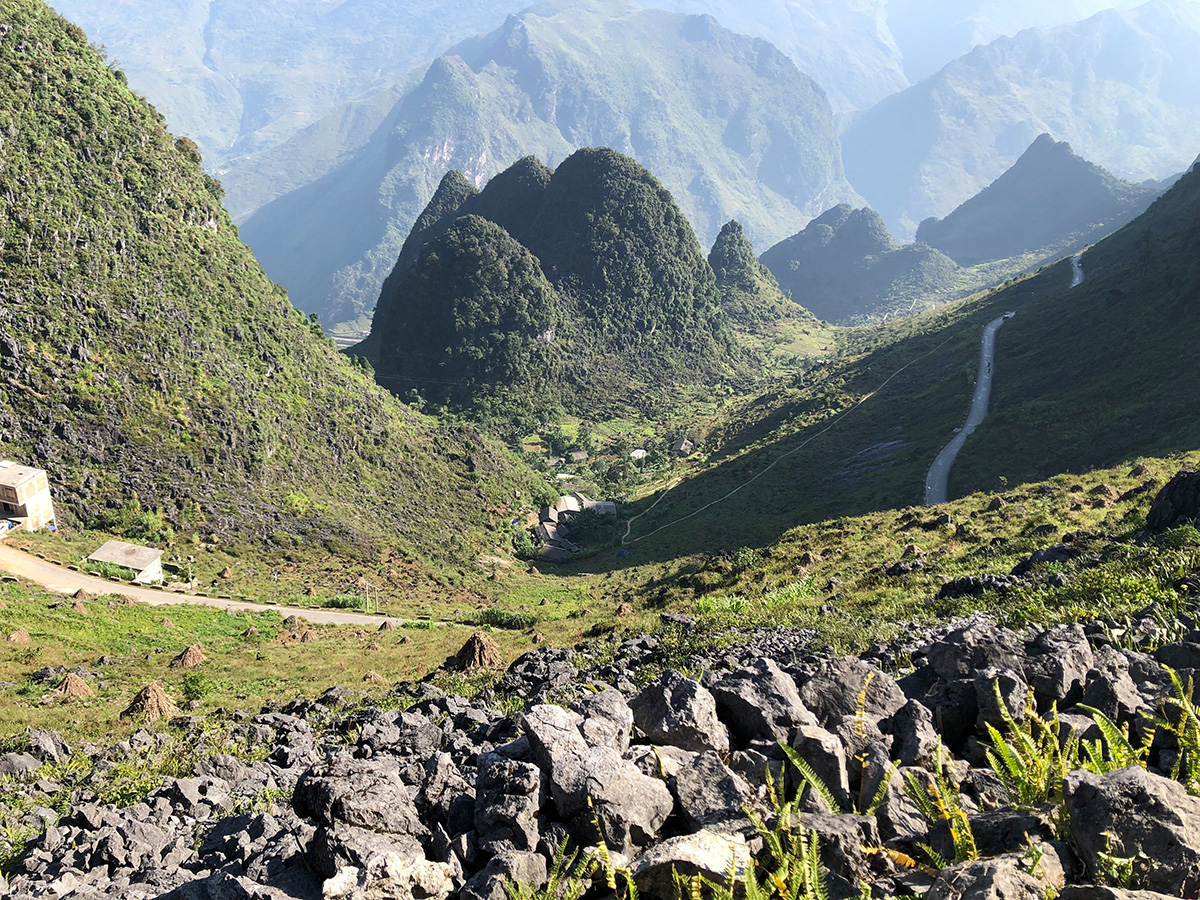
1. What Makes Pho Cao Market Unique?
Unlike most Vietnamese markets that run on fixed weekdays, Pho Cao Market follows an ancient six-day rotation known locally as the backward market. Each cycle shifts one day earlier if it falls on Monday this week, it will happen on Sunday next time, then Saturday after that.
This unique rhythm, rooted in pre-colonial lunar calendars, once suited the nomadic and agricultural lifestyles of Ha Giang’s highland communities. It allowed villagers to attend multiple markets without overlap while honoring traditional beliefs about auspicious days for trading and socializing.
At dawn, locals from surrounding communes travel by foot, motorbike, or even horseback to Pho Cao. By mid-morning, the mountain paths come alive with color and conversation farmers selling fresh produce, artisans trading handmade goods, and families reconnecting over shared meals. As the sun dips behind the karst peaks, the crowd slowly disperses, marking the end of another six-day rhythm that has pulsed through Ha Giang’s highlands for centuries.
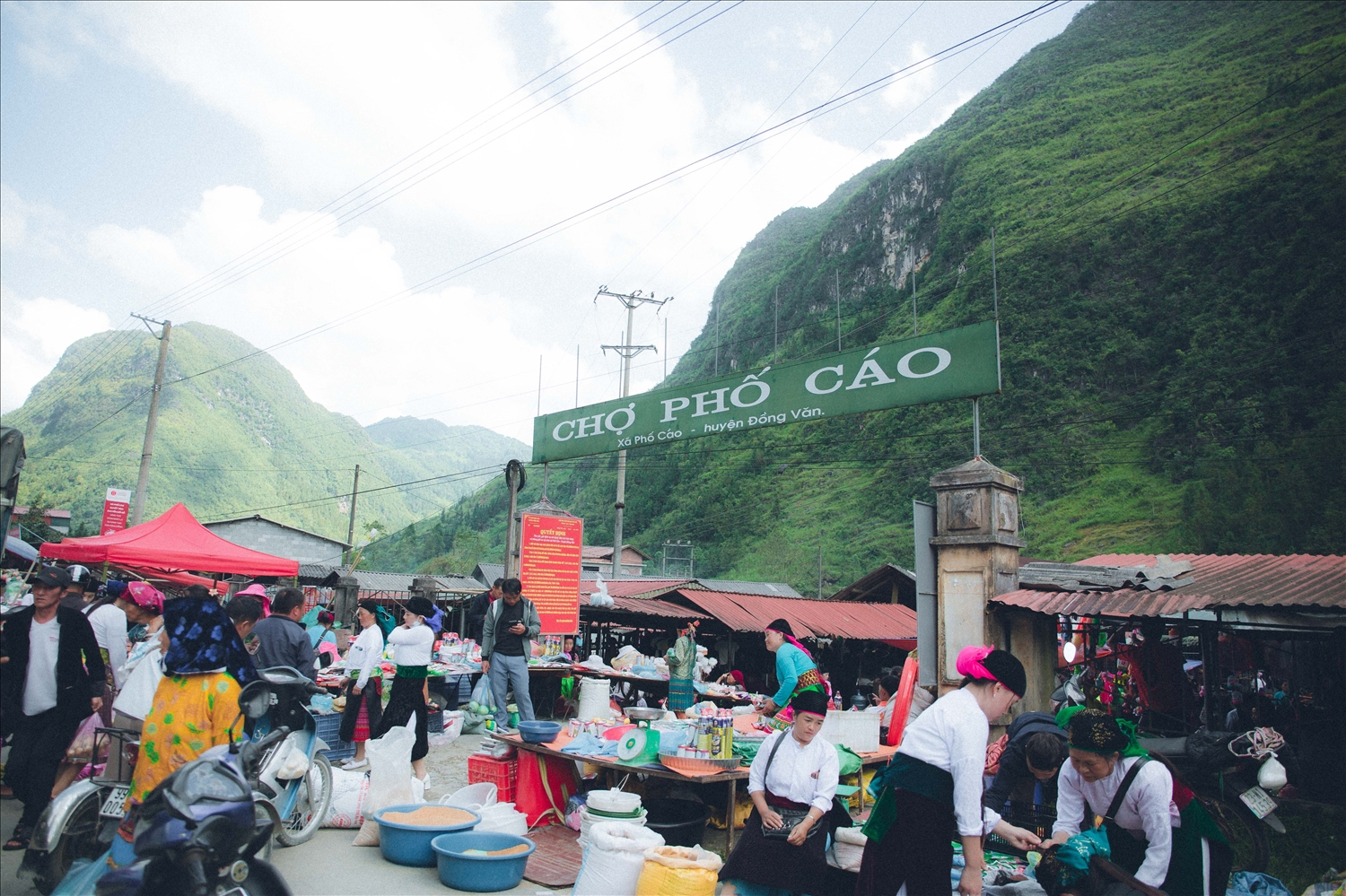
Dong Van Old Quarter Travel Guide: What to Eat, Do, and Where to Stay
2. Where Is Pho Cao Market? Location & History
Perched at over 1,200 meters above sea level on the Dong Van Karst Plateau, Pho Cao sits between Dong Van and Meo Vac two of Ha Giang’s most spectacular districts. The village is surrounded by dramatic limestone peaks, terraced cornfields, and ancient Hmong houses built from clay and stone, preserving an architectural style that has endured for centuries.
Historically, Pho Cao served as a crossroads for trade and culture, where ethnic Hmong, Lo Lo, Tay, and Nung communities exchanged goods, livestock, and stories. Over generations, this highland market evolved into a cultural hub a place where traditional costumes, handwoven fabrics, and local delicacies continue to reflect the region’s diverse identity.
Despite its remote setting, the market remains an essential part of daily life. Traders and farmers from neighboring valleys still gather here every six days, following the same rotation system used by their ancestors. The rhythm of Pho Cao blends geography and heritage a living reminder of how the land has shaped the people, and how the people have given life to this rugged landscape.

Brocade Clothes in Ha Giang: 6 Ethnic Styles You Should Know
3. Who Attends? Ethnic Groups & Cultural Significance
The true magic of Pho Cao Market lies in its role as a gathering point for the region’s diverse ethnic communities. Each group brings distinct traditions, languages, and cultural practices that collectively create the market’s unique atmosphere.
3.1 List of 17 Ethnic Minorities
Every market day, Pho Cao Market turns this quiet valley into a vivid tapestry of Vietnam’s highland life. Up to 17 ethnic minorities including the Hmong, Dao, Tay, Nung, Giay, Lo Lo, San Chi, Pa Then, Co Lao, Pu Peo, Bo Y, La Chi, Hoa, Kinh, Phu La, Muong, and Thai gather here to trade goods, exchange stories, and celebrate centuries-old traditions.
The market is more than a trading hub it’s a living museum of culture. The Hmong, dressed in indigo-dyed hemp with intricate batik designs, mingle with the Red Dao women in bright red headdresses decorated with silver coins. The Tay and Nung wear simple indigo outfits, while the Lo Lo and Giay add splashes of color with handwoven skirts and bamboo crafts.
From dawn to dusk, Pho Cao buzzes with laughter, the hum of bargaining, and the scent of local food. Each ethnic group brings its own rhythm, language, and spirit creating a rare and authentic glimpse into the ethnic diversity of the Ha Giang Loop.
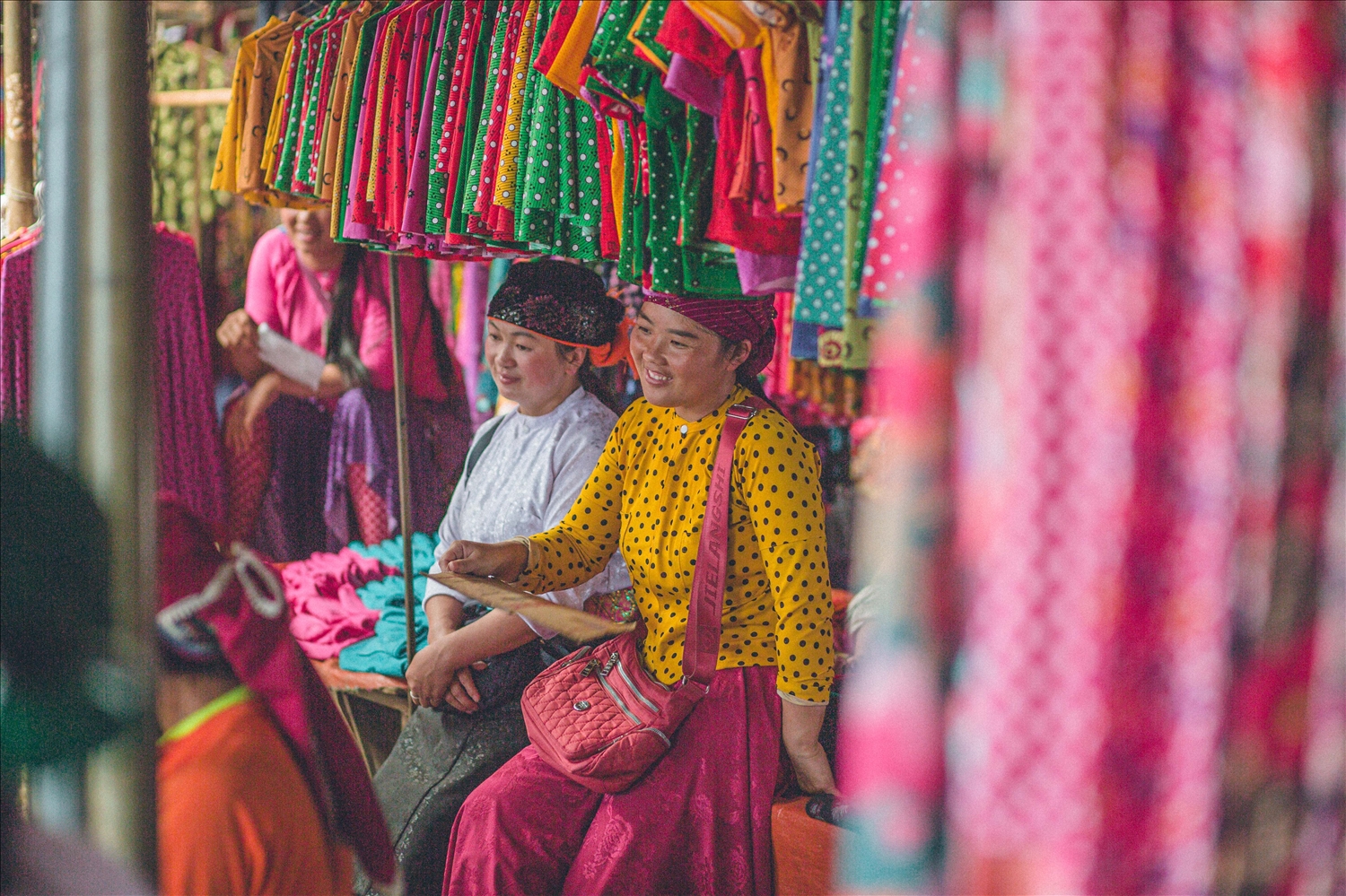
3.2 Cultural Interactions and Community Role
Beyond commerce, Pho Cao Market serves as a vital social institution where cultural exchange occurs naturally. Younger members of different ethnic groups often learn each other’s languages through market interactions, creating a form of multilingualism unique to border regions. These linguistic exchanges have helped preserve minority languages that might otherwise fade with modernization.
The market functions as an informal community center where disputes are resolved, celebrations announced, and important news shared. Village elders often gather at designated spots to discuss community affairs while enjoying corn wine or green tea. For young people, market day provides precious opportunities for courtship within the bounds of traditional customs. Many local families trace marriages back to initial meetings at Pho Cao Market.
Cultural performances sometimes spontaneously occur, with musical instruments like the đàn tính (gourd lute) or khen (bamboo pipes) played during midday breaks. These performances preserve oral traditions and folktales that contain the collected wisdom of highland communities. For visitors, these unscheduled moments offer authentic glimpses into living cultural practices rather than staged performances created for tourists.
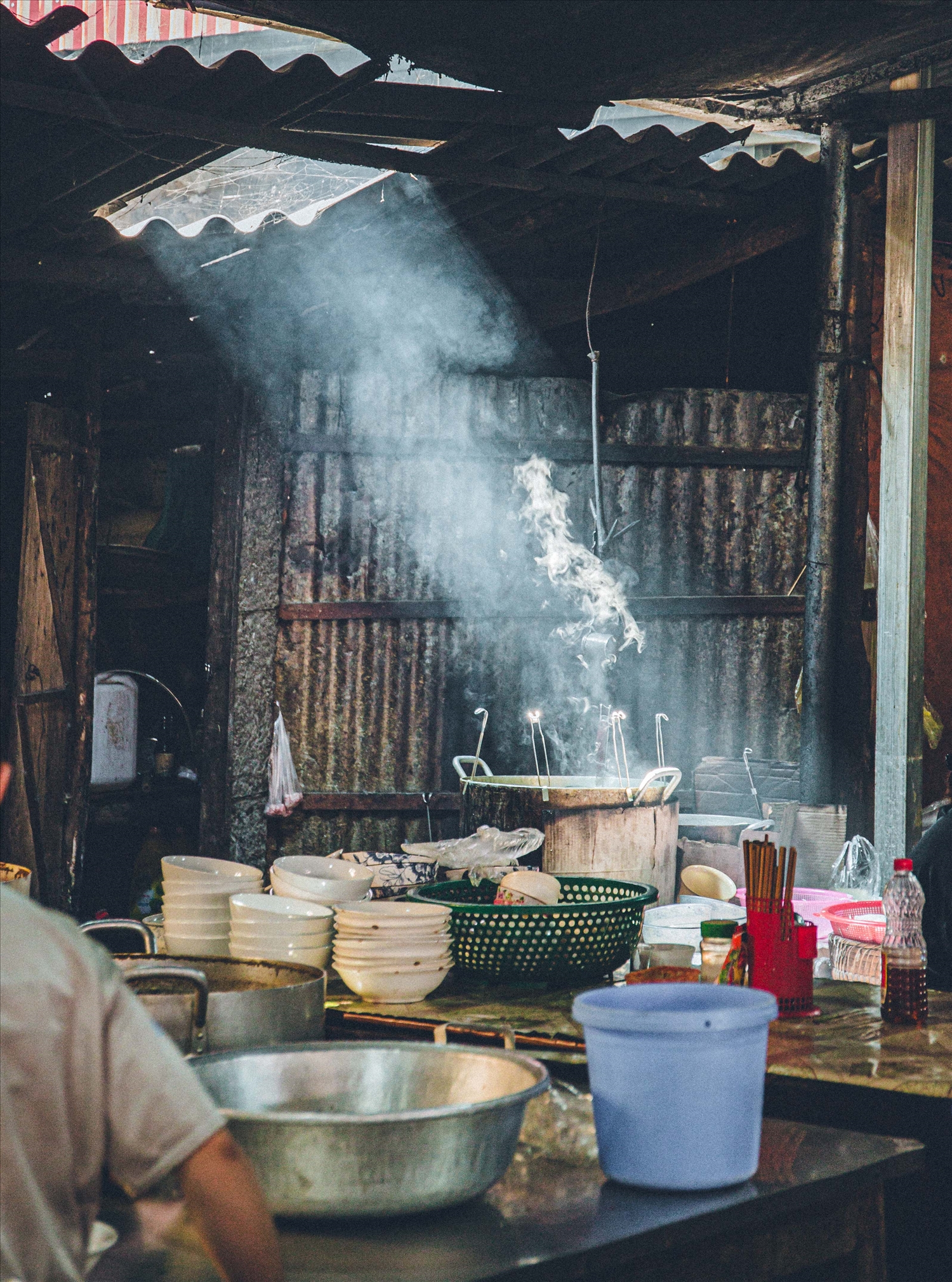
4. What Experiences Await?
Visiting Pho Cao means immersing yourself in a sensory feast. The market pulses with authentic highland culture, offering experiences impossible to replicate in more developed tourist destinations.
4.1 Trade, Social Gatherings, and Local Shopping
The market arranges itself into informal sections, each with distinct offerings. Near the entrance, agricultural products dominate sacks of rice, corn, and medicinal herbs harvested from mountain forests. Deeper inside, you’ll find handicrafts, textiles, and household goods. The central area typically houses food stalls and communal seating where visitors and locals alike gather to eat and socialize.
Trading methods remain refreshingly traditional. While Vietnamese dong is the primary currency, you might still observe direct bartering between vendors, particularly among elderly villagers exchanging homegrown produce. Haggling is expected but should be approached respectfully, recognizing that most goods represent many hours of labor. Most transactions conclude with friendly conversation rather than hurried exchanges.
Shopping highlights include handwoven textiles, particularly hemp cloth produced by Hmong artisans using traditional indigo dyeing techniques. Embroidered bags, silver jewelry, and wooden household items make meaningful souvenirs with authentic cultural connections. The market also offers unusual agricultural products like wild honey, forest mushrooms, and medicinal herbs not commonly found elsewhere.
4.2 Traditional Music, Dance, and Performances
While not formally scheduled, cultural performances frequently occur throughout market day. Small groups of musicians sometimes gather at the market’s edge, playing traditional instruments including the two-stringed đàn nhị fiddle and various bamboo flutes. These impromptu concerts attract crowds of appreciative locals and provide visitors with authentic musical experiences.
On special occasions, particularly before major festivals, you might witness traditional dances performed by younger community members. The Hmong turning dance and the Dao fire dance are particularly captivating expressions of cultural identity. Unlike performances staged specifically for tourists, these authentic displays emerge organically from community celebrations.
Artisans sometimes demonstrate traditional crafts, including hemp spinning, indigo dyeing, and silver work. These demonstrations aren’t performed primarily for visitors but represent the ongoing transmission of skills between generations. Respectful observers are usually welcomed, especially if they show genuine interest in understanding the cultural significance of these practices.
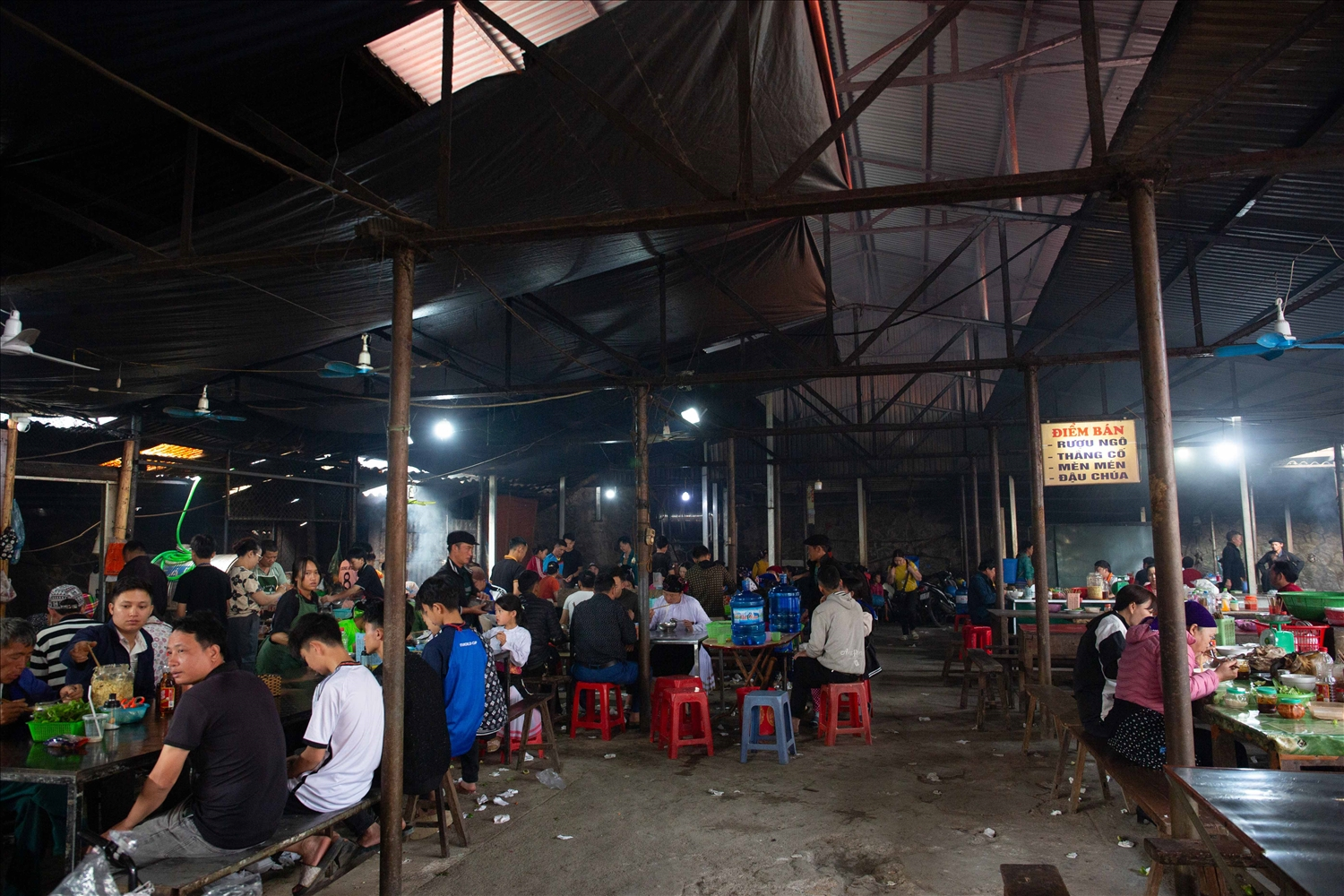
5. What Are the Must-Try Specialties?
Pho Cao’s culinary offerings provide a delicious introduction to highland gastronomy, featuring ingredients and techniques unique to Vietnam’s northern mountains. These authentic foods offer visitors tangible connections to local cultural heritage.
5.1 Signature Dishes: Thang Co, Five-Color Sticky Rice
The market’s food stalls present a remarkable array of highland specialties difficult to find elsewhere. Most dishes utilize locally harvested ingredients prepared according to traditions passed through generations. Notable offerings include:
- Five-color sticky rice, dyed naturally with forest plants and herbs to create purple, yellow, red, black, and white portions representing harmony and balance.
- Smoked meats, including pork and beef preserved using traditional smoking methods over wood fires.
- Corn wine, a potent spirit served in small cups, often shared communally among friends and visitors.
- Wild vegetable dishes harvested from surrounding forests, including bamboo shoots, ferns, and medicinal herbs.
- Buckwheat cakes, made from locally grown buckwheat flour and often stuffed with bean paste or meat.
These foods aren’t merely sustenance but represent important cultural heritage. Many dishes incorporate specific ingredients believed to have medicinal or spiritual properties according to traditional knowledge systems.
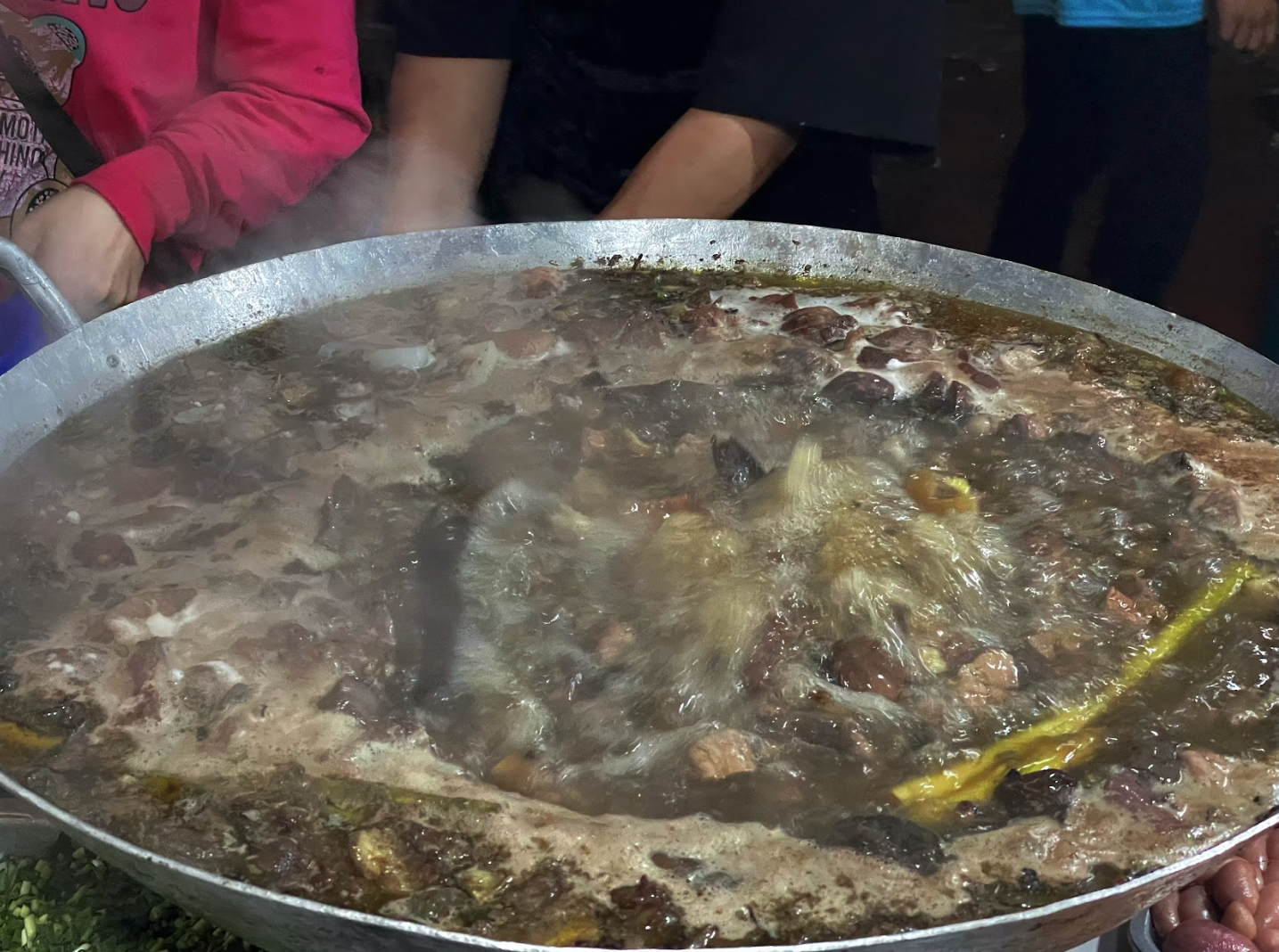
5.2 Handicrafts, Textiles, and Souvenirs
Beyond food, Pho Cao Market showcases remarkable handicrafts representing thousands of years of artistic tradition. Textile arts dominate, with each ethnic group displaying distinctive techniques and aesthetic sensibilities. Particularly notable are:
- Hmong indigo-dyed hemp cloth, featuring intricate batik designs and cross-stitch embroidery.
- Dao red headscarves and ceremonial garments adorned with tiny glass beads and silver coins.
- Lo Lo appliqué textiles combining geometric patterns in vibrant primary colors.
- Tay woven baskets and bamboo household items combining practicality with artistic merit.
Traditional silversmithing appears in jewelry and ceremonial items, particularly neck rings, earrings, and bracelets that historically indicated family wealth and status. Local blacksmiths offer hand-forged agricultural tools and hunting knives that demonstrate exceptional craftsmanship. Wooden household items, including rice storage containers and ceremonial objects, often feature intricate carvings representing spiritual beliefs and natural motifs.
For thoughtful visitors, these items offer more meaningful souvenirs than mass-produced trinkets found elsewhere. Each piece represents specific cultural knowledge and artistic traditions preserved through generations despite economic pressures toward standardization and modernization.
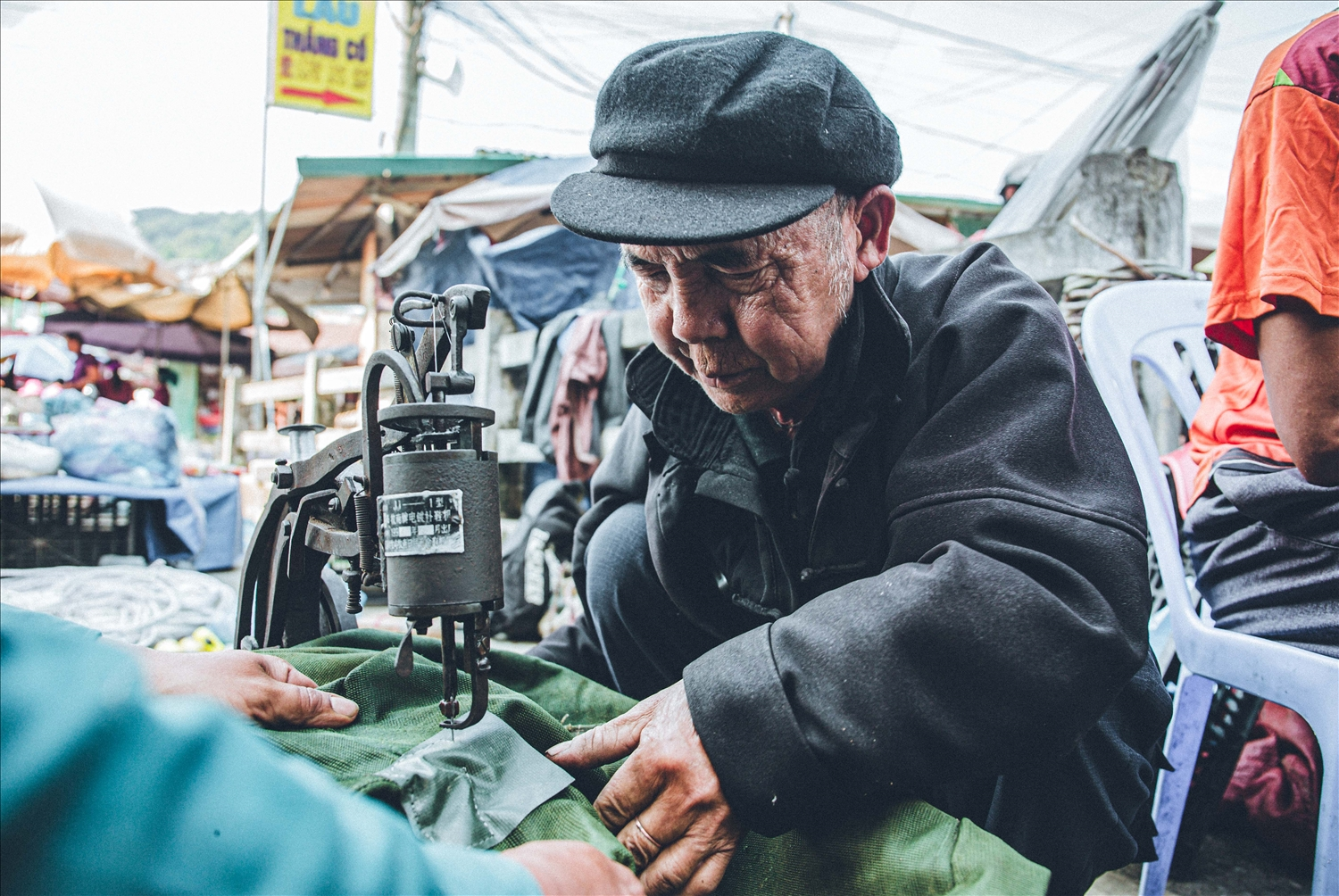
6. What Should Visitors Know? Practical Travel Tips
A successful visit to Pho Cao requires some preparation. The market’s remote location and unique scheduling present logistical challenges, but proper planning ensures a rewarding cultural experience.
6.1 Best Time to Visit
Timing your visit correctly proves crucial for experiencing Pho Cao Market. Since the market operates on a six-day rotation, check the current schedule before planning your trip. Local tourism offices in Ha Giang city or Dong Van town can provide updated information, as can major hotels in the region. Online resources sometimes list schedules, but on-the-ground verification remains most reliable.
Seasonally, October through April offers the most comfortable weather conditions. The autumn months (September-November) coincide with rice harvest and the blooming of buckwheat flowers, creating spectacular landscapes. Winter months (December-February) bring chilly temperatures but clear skies ideal for photography. Spring festivals from February through April add cultural richness to market experiences.
Arrive early ideally before 8:00 AM to witness vendors setting up and enjoy the market before midday crowds peak. Plan to spend at least 3-4 hours exploring thoroughly. If possible, arrange accommodation in nearby Dong Van town rather than attempting a day trip from Ha Giang city, as mountain roads require careful navigation and unexpected delays are common.
6.2 What to Bring and What to Expect
Practical preparation enhances your Pho Cao Market experience. Essential items include:
- Cash in small denominations (ATMs don’t exist near the market).
- Comfortable walking shoes suitable for uneven terrain.
- Layered clothing (mountain weather changes quickly).
- Basic Vietnamese phrases written down (few locals speak English).
- A small daypack for purchases.
- Camera with extra batteries (charging opportunities are limited).
- Respectful attitude toward local customs and people.
Expect basic facilities at best toilets are typically rustic, and seating areas limited. Mobile phone coverage exists but can be unreliable. Food safety standards differ from urban areas, though market foods are generally prepared freshly. If you have specific dietary concerns, bringing supplementary snacks is advisable.
Most importantly, approach the experience with cultural sensitivity. Ask permission before photographing individuals, especially elderly people or religious activities. Dress modestly in keeping with local standards. Remember that while tourism is growing, Pho Cao remains primarily a functional market serving local communities rather than a tourist attraction.
For travelers seeking authentic cultural experiences beyond standard tourist circuits, Phieu Travel can arrange guided visits to Pho Cao Market with knowledgeable local guides from ethnic minority backgrounds. These guides provide cultural context and language interpretation that enhance understanding of this remarkable highland tradition. Visit Phieutravel.com for information about culturally responsible tours throughout Vietnam’s northern highlands, including the fascinating ethnic markets of Ha Giang province like Pho Cao.
Pho Cao Ha Giang stands as one of Vietnam’s most authentic cultural experiences a living museum where ancient trading traditions continue largely unchanged by modern tourism. For travelers willing to venture beyond conventional destinations, this remarkable market offers genuine connections with the diverse ethnic heritage that makes northern Vietnam so culturally rich.
Read more:
- Ha Giang Loop Fines and License Requirements (20th October 2025 Guide)
- Best Things to Do in Duong Thuong, Ha Giang Vietnam
- Quan Ba Heaven Gate Gateway to Ha Giang’s Mystical Highlands

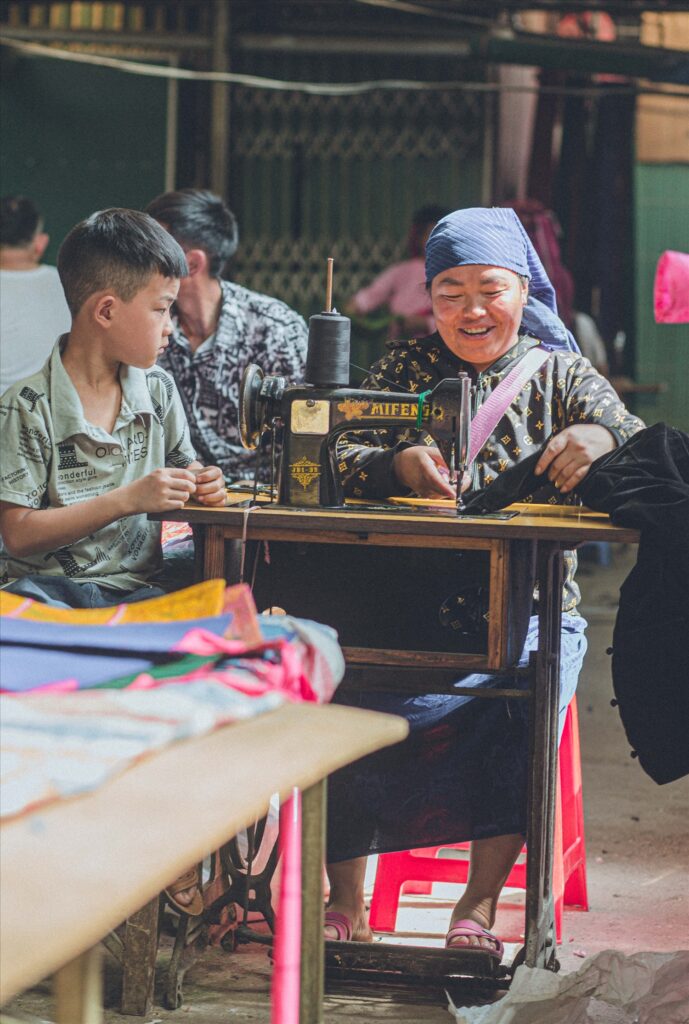
You Might Also Like
Ha Giang Weather in September: Complete Guide for Travelers
Exploring the magnificent Ha Giang Loop in September offers travelers a perfect balance of favorable[...]
Quan Ba Twin Mountains: Ha Giang’s Iconic Fairy Hills and Complete Travel Guide
The mystical Quan Ba Twin Mountains rise from the emerald valleys of Ha Giang like[...]
Vuong family mansion: the architectural marvel and cultural legacy of Ha Giang
Deep in Vietnam’s northern highlands, where mist-shrouded mountains meet terraced rice fields, stands a testament[...]
Ha Giang Loop Safety Tips: How to Ride Securely in Vietnam’s Northern Mountains
The Ha Giang Loop, with its winding mountain roads and breathtaking landscapes, offers one of[...]
The Ultimate Guide to the M-Shaped Curve on Ha Giang Loop
Vietnam’s remote northern province of Ha Giang hides a natural wonder that has captivated adventurous[...]
Most Beautiful Places to Visit in Vietnam: Essential Destinations and Insider Tips
Vietnam captivates travelers with its stunning landscapes, rich cultural heritage, and warm hospitality. From mist-shrouded[...]
Beyond the Beaten Path: Discovering Ha Giang Province in Northeast Vietnam
Ha Giang Province in Northeast Vietnam stands as one of the country’s last frontiers for[...]
Rainy season in Ha Giang: what to expect, when to go, and travel tips
Vietnam’s northern frontier reveals a different face during the rainy season, transforming Ha Giang’s limestone[...]